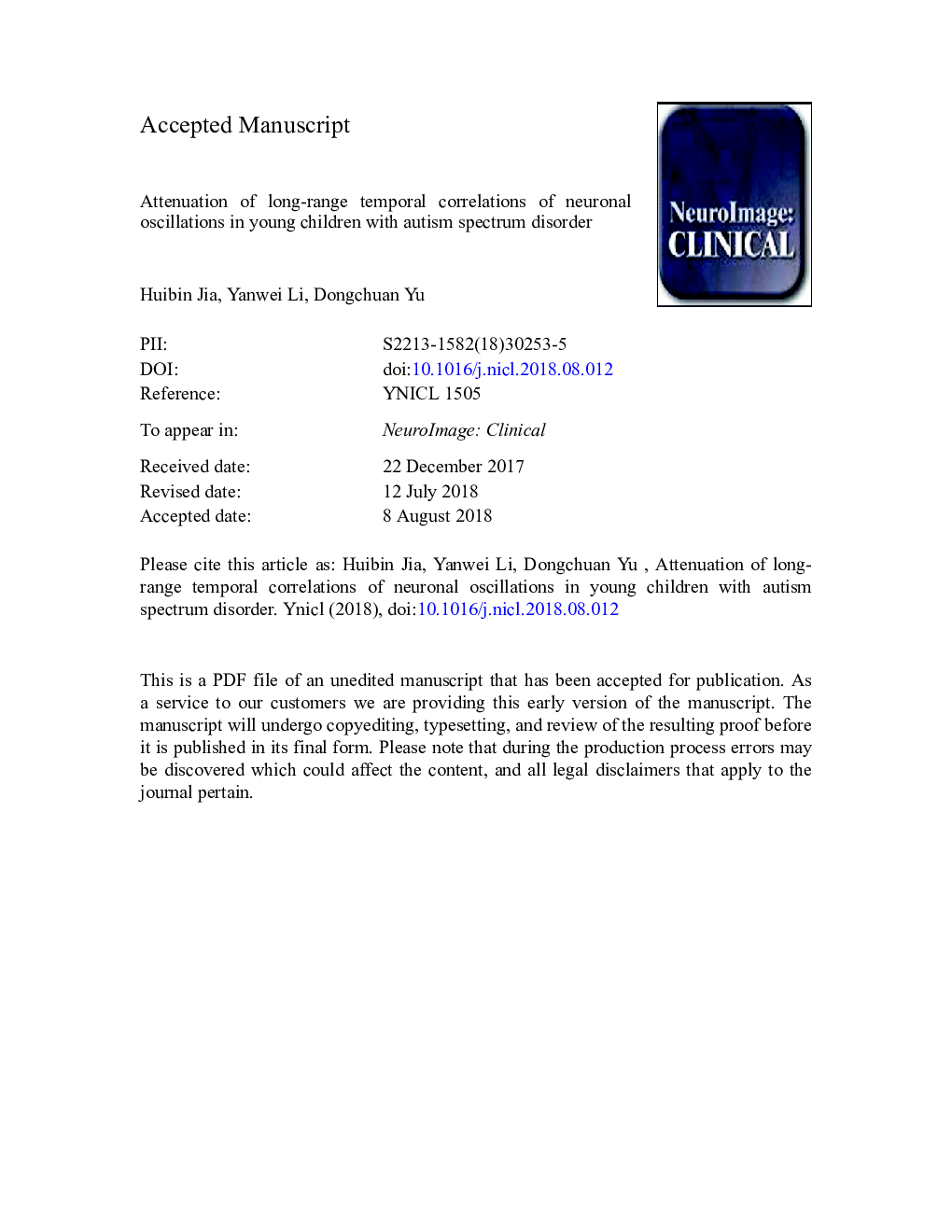| Article ID | Journal | Published Year | Pages | File Type |
|---|---|---|---|---|
| 9990923 | NeuroImage: Clinical | 2018 | 28 Pages |
Abstract
Although autism spectrum disorder (ASD) was previously found to be associated with aberrant brain structure, neuronal amplitudes and spatial neuronal interactions, surprisingly little is known about the temporal dynamics of neuronal oscillations in this disease. Here, the hemoglobin concentration signals (i.e., oxy-Hb and deoxy-Hb) of young children with ASD and typically developing (TD) children were recorded via functional near infrared spectroscopy (fNIRS) when they were watching a cartoon. The long-range temporal correlations (LRTCs) of hemoglobin concentration signals were quantified using detrended fluctuation analysis (DFA). Compared with TD group, the DFA exponents of young children with ASD were significantly smaller over left temporal region for oxy-Hb signal, and over bilateral temporo-occipital regions for deoxy-Hb signals, indicating a shift-to-randomness of brain oscillations in the children with ASD. Testing the relationship between age and DFA exponents revealed that this association could be modulated by autism. The correlation coefficients between age and DFA exponents were significantly more positive in TD group, compared to those in ASD group over several brain regions. Furthermore, the DFA exponents of oxy-Hb in left temporal region were negatively correlated with autistic symptom severity. These results suggest that the decreased DFA exponent of hemoglobin concentration signals may be one of the pathologic changes in ASD, and studying the temporal structure of brain activity via fNIRS technique may provide physiological indicators for autism.
Related Topics
Life Sciences
Neuroscience
Biological Psychiatry
Authors
Huibin Jia, Yanwei Li, Dongchuan Yu,
